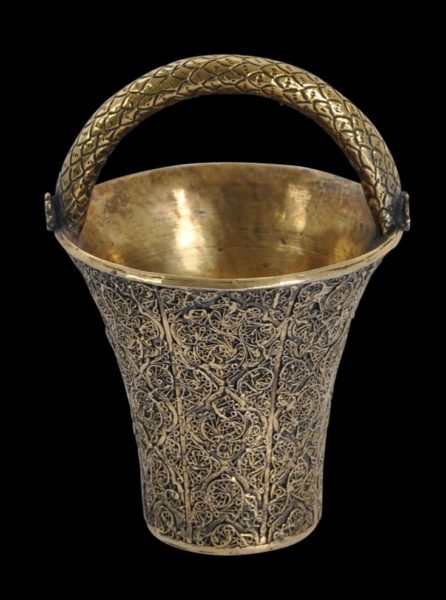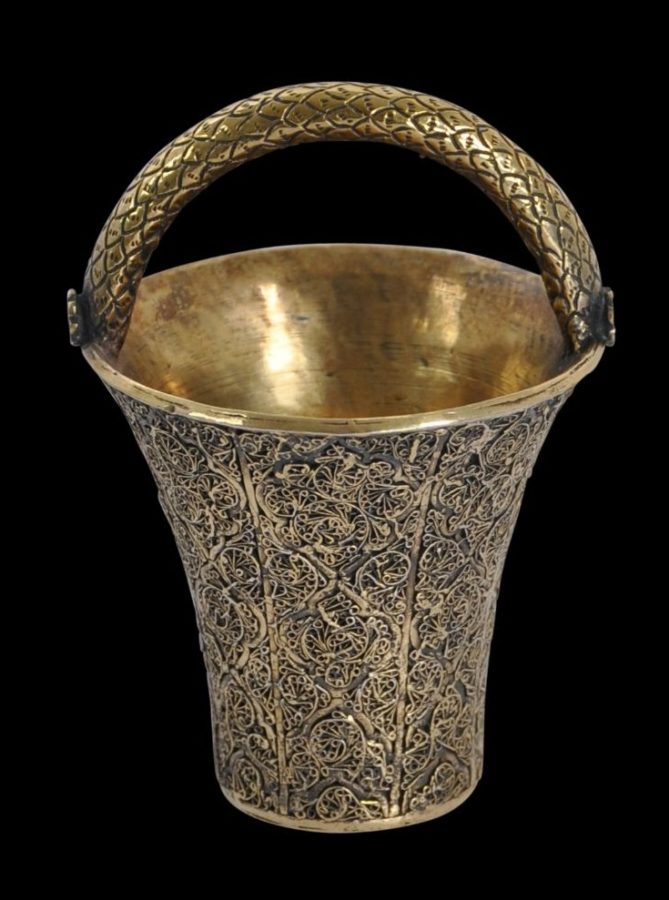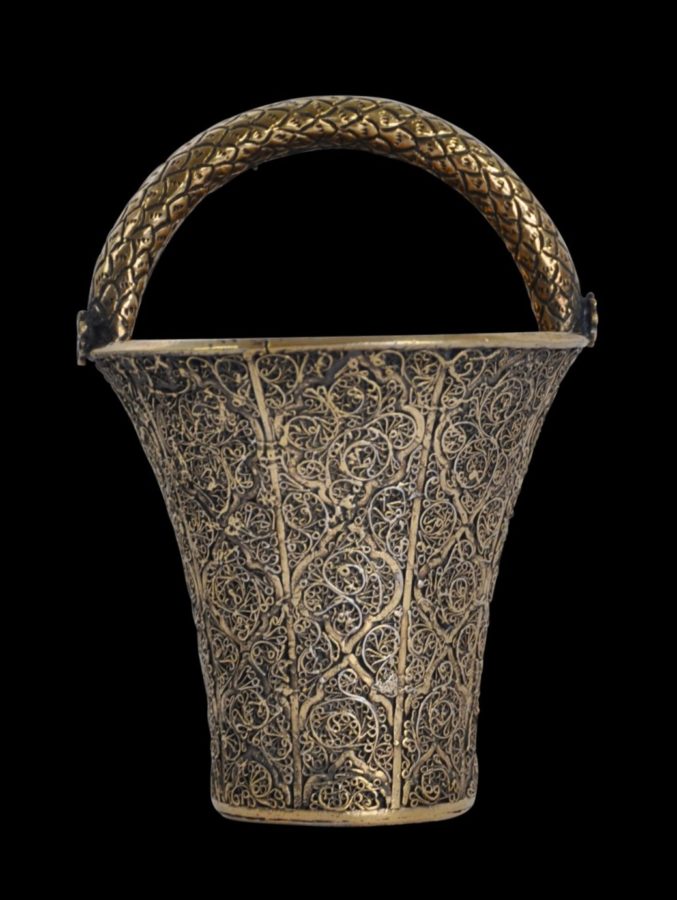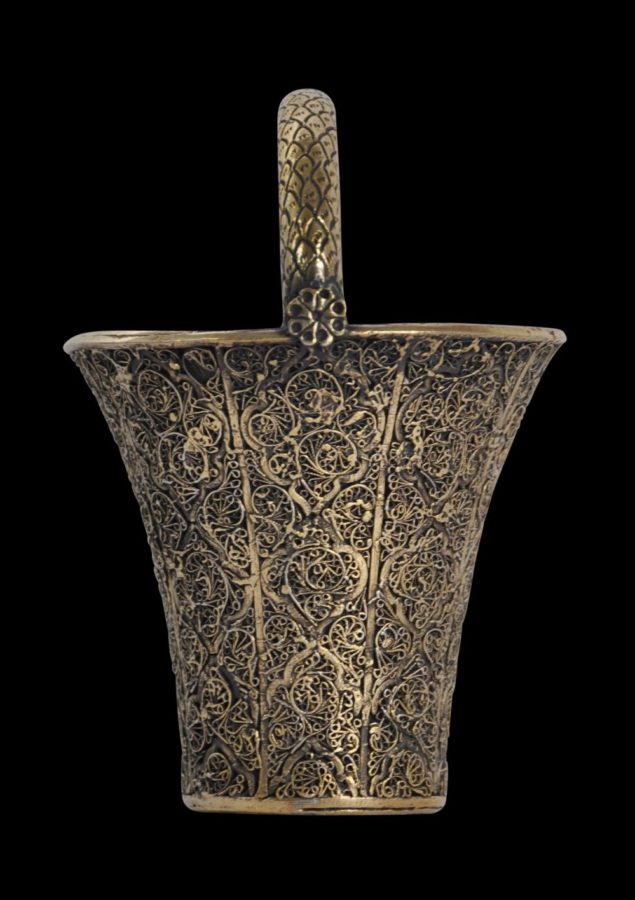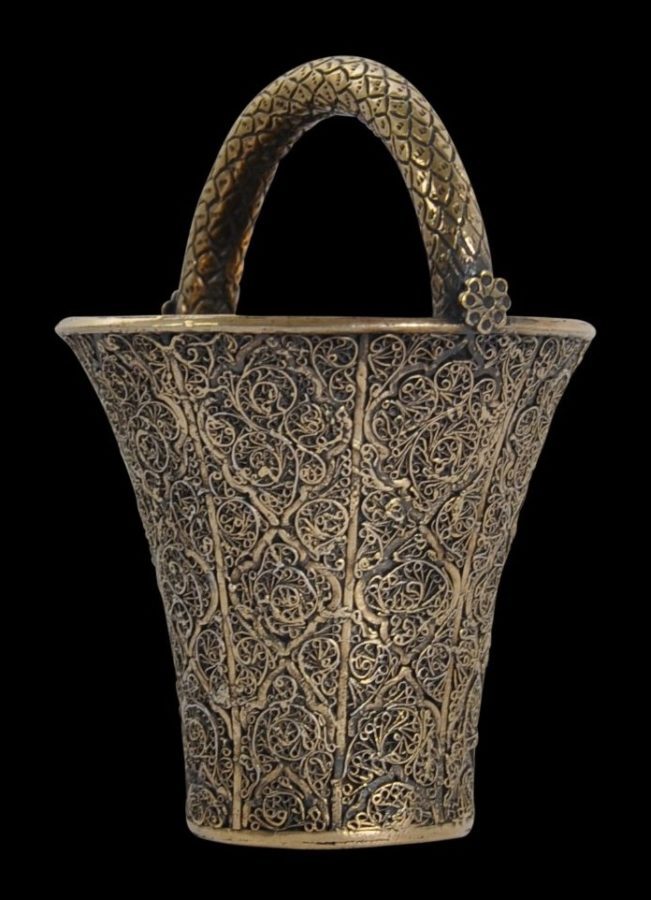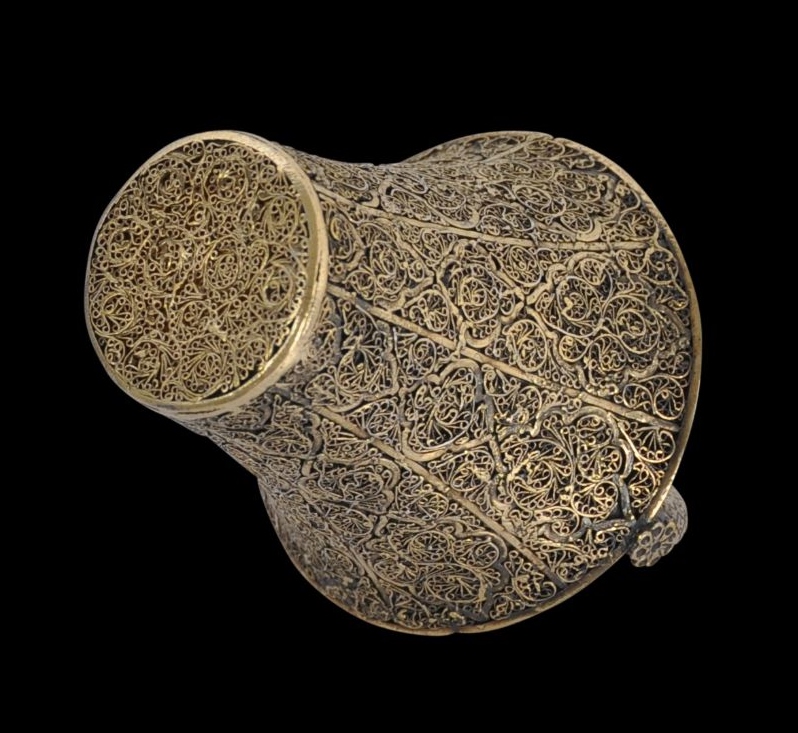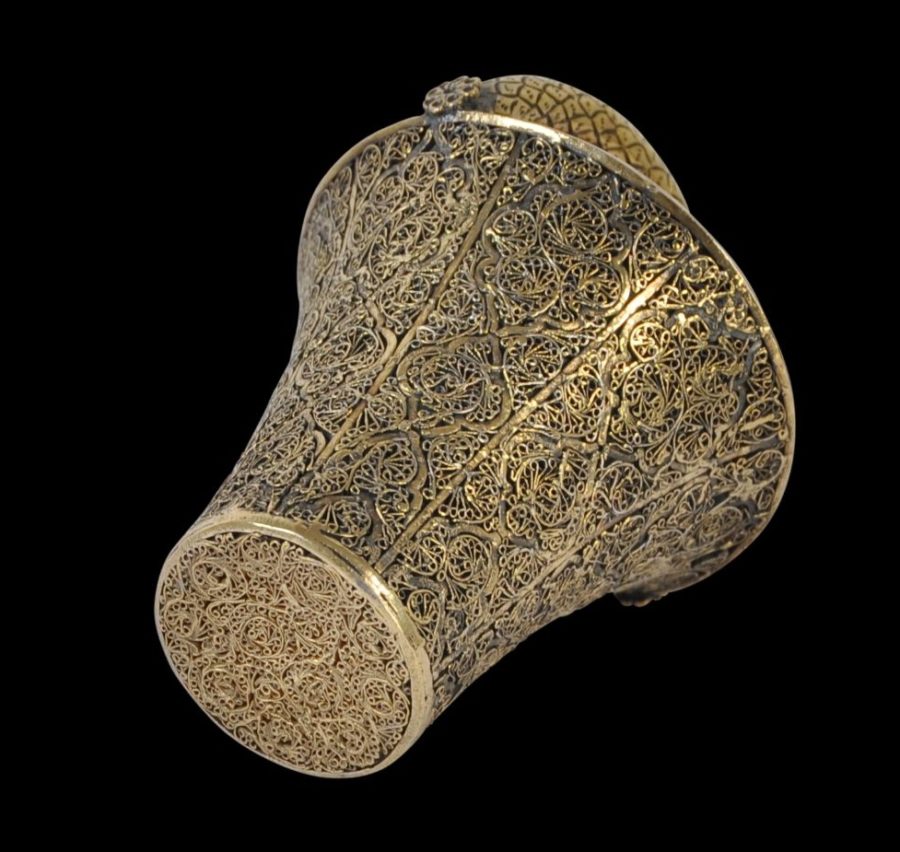Enquiry about object: 6389
Rare, Indo-Portuguese Ceremonial Gilded Silver Filigree Flower Basket
Indo-Portuguese Goa, India second half of the 17th century
height: 10.2cm, diameter: 6.6cm, weight: 136g
Provenance
previously in a private house, Bangkok, Thailand
This rare silver-gilt basket most likely originates from Indo-Portuguese Goa in India and was made for the Indo-Portuguese market. It dates to the second half of the 17th century. (Goa, in west India, was ruled by the Portuguese from 1510 until 1961. It became a very important centre for the manufacture of exotic luxury goods for the European market from the 16th century onwards.)
It is likely to have been made for church processions whereby young girls would precede a procession along the aisle of the church, and scatter petals and small flowers from such a basket as they went. Colonial silver filigree baskets for this purpose are illustrated in Taullard (2004, ill. 56).
The basket comprises a solid silver substructure that is completely covered in applied silver filigree work, including to the base. A silver, hollow handle incised with a feather or scale-like motif arches over the basket and this terminates at each end with an applied flower motif. The vase has been gilded or gold plated in its entirety, including the smooth interior. This gilding has developed a lovely soft golden hue over the centuries.
The work on this basket is similar to that on some bezoar or ‘Goa’ stone boxes that date from the same period. Other examples of filigree that are very similar to that on this basket are illustrated in Jordan et al (1996, p. 219) and Seipal (2000, p. 195).
Interestingly, this item was originally discovered in a private collection in a house in Bangkok, Thailand. It is not certain how the basket came to be in Thailand but there were long ties between Siam, and Thailand was well known to Portuguese traders. By the mid-16th century, it is believed that the Portuguese population of Ayutthaya, the old Siamese capital, numbered between 2,000 and 5,000. Various kings of Siam authorised the establishment of Catholic religious orders in the city – the first Dominicans arrived in 1565, and the first Jesuits in 1606 (Dias, 2011, p. 10). A Portuguese quarter soon developed in Ayutthaya too, and this included a number of churches. Accordingly, Portuguese soldiers, traders and other figures came to be represented in Thai art, most notably among the motifs found on earlier examples of nielloware and also in the gilded lacquerwork that adorns cabinets and chests of the period.
The basket here is in very fine condition. Losses to the filigree are minimal and there are no repairs. Overall, this is a rare and fascinating piece.
References
Dias, P., Thailand and Portugal – 500 Years of a Common Past: The Art Legacy – The Tavaro Sequeira Pinto Collection, Grafica de Coimbra, 2011.
Jordan, A. et al, The Heritage of Rauluchantim, Museu de Sao Roque, 1996.
Seipal, W. (ed.), Exotica: Portugals Entdeckungen im Spiegel furstlicher Kusnt – und Wunderkammern der Renaissance, Skira, 2000.
Taullard, A., Plateria Sudemericana, Ediciones Espeula de Plata, 2004.


